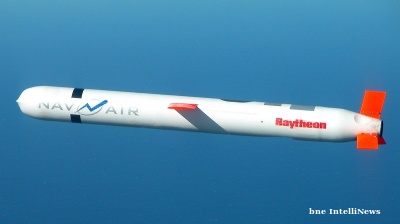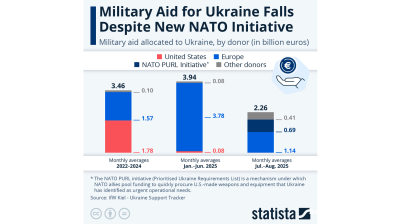ED: This article is one of a series called The Fourth Russia that imagines what the world will be like five years in the future. It is pure speculation based on best-guess assumptions and is designed to be a jumping off point for thinking about what the longer-term consequences of the war in Ukraine will be for Russia, Europe and the world.
On a warm day in June the crowds throng the Gorbushka electronics and media market in the Fili Park in west Moscow. The new iPhone XX is out and since Apple pulled out of Russia a month after the war in Ukraine broke out five years ago, it is not officially on sale in Russia. But it is in Gorbushka.
The famous market came to prominence in the 1990s after the fall of the Soviet Union. Traders flooded Russia with all the consumer goods that were missing from the People’s Paradise – consumer electronics, movies and software chief among them.
The so-called “suitcase traders” would fly to Istanbul or Berlin and pack their cases with sought-after goods to come back and sell them again at Gorbushka. Mini-factories were set up to copy the latest Hollywood blockbuster and games and software.
Already in the Yeltsin government the government tried to stamp out the rampant pirating of intellectual property and banned parallel imports – the import and sale of goods without the permission of the copyright holder. But it was difficult. Yeltsin sent armed police officers to close down Gorbushka several times before the market, which turns over hundreds of millions of dollars a year in sales, was finally forced to go white. Under Russian President Vladimir Putin the market continued to flourish, but increasingly the vendors had legitimate distribution deals with the manufacturers of the white goods and intellectual property holders.
Now the market is back in all its former glory. The Russian government did a volte-face only two months after extreme sanctions were imposed and made parallel imports legal, effectively legalising piracy once more in an effort to keep the gizmo-crazy Russians supplied with all their favourite widgets.
Before the war Russians bought some 30mn smartphones a year, but without the formal relations with the producers importing that amount of phones is impossible. In the place of re:Stores, a legion of small traders have sprung up and import phones and other goods via third countries, but the lot size is necessarily limited and the markups are higher, adding as much as 30% to the prices. At the same time, none of the goods sold in Russia carry the manufacturer’s warranty and on phones many of the preinstalled apps do not work.
For those with a little more money or time on their hands, a trip to the local electronic store while on holiday has become de rigueur during annual summer holidays, with the more enterprising Russians offsetting the cost of their break by filling a suitcase with hard-to-find consumer goods.
Industrial regression
While Ukraine flourishes, life in Russia continues to go backwards after it was cut off from the international market five years ago. As bne IntelliNews reported a year before the war started, Russia’s sanctions soft underbelly was its almost total dependence on imported precision tools and advanced technology or software. Cut off from the rest of the world and then economically flat on its back for over a decade, Russia missed out on two tool-making revolutions and by the time it started to grow in the noughties industry was hopelessly behind. Despite several attempts by the Kremlin to catch up, little progress was made.
Precision equipment and technology disappeared almost overnight in 2022, leading to the immediate collapse of Russia’s domestic automotive industry. Within a month of the Russian tanks crossing the border five out of Russia’s six car plants were closed due to the lack of spare parts and car sales were down by 76%.
Since then industrial regression has set in. CBR Governor Elvia Nabiullina warned in March, a month after the war started, that Russian companies would have to go back two or more generations in technology to function. Companies, especially in the food processing industry, have had to buy old equipment and despite the best efforts of Russia’s entrepreneurs, they have not been able to reverse engineer much of the equipment that used to be largely imported from Germany and the US.
There have been a few exceptions in the less technologically sophisticated sectors. YedaPromMash, which makes food processing equipment, is the rising star of the sector after it entered into a joint venture with China, but in aviation, automotive and telecoms Russia continues to lag well behind the rest of the world. Iranian experts have been advising automotive producers, thanks to that country's long experience of manufacturing Peugeot cars during decades of sanctions, and the improving quality of Indian and Chinese equipment has mitigated some of the problems. But Russia continues to fall further and further behind the rest of the world. Even China can’t export its more advanced technology, as it is made under licence from US companies that are forbidden to trade with Russia.
Techless
Online services have also fallen well behind since Russia was cut out of the global technology revolution. Sberbank never changed its name back from Sber, when it dropped the word “bank” from its name as it tried to build a technological empire that catered to its customers' entire life. German Gref, its long-standing chairman, continues to try to roll out new online services over the so-called RuNet, but Sber’s offering has gone from cutting edge to almost-ran as even the Baltic states far outstrip the Russian offering. Estonia closed its last bank branch four years ago and now banks only have their headquarters as an actual office, while all their services are in the ee-cloud, as it is known.
Many of the online services that disappeared in March and April 2022 have been recreated by local startups such as RuTube, RusBox, RuCloud and in retail the now ubiquitous RosBurger has successfully replaced McDonalds.
However, the surprising success of RuPay continues to go from strength to strength and is starting to compete with ApplePay and PayPal internationally. Now widely accepted worldwide, RuPay’s exponential growth has been driven by the rubit, the digital ruble set up by the Central Bank of Russia (CBR) just before the war – a regulated version of a cryptocurrency. The regulator actively promoted the rubit as a way to make international payments outside the reach of the US Federal Reserve. The making of rubit happened after it was incorporated as an exchange currency in the joint venture between RuPay, China’s Alipay and Turkey’s BKM, and the electronic currency started to gather momentum.
The flow of tourists between the three countries and the exponential growth of e-wallet use globally fuelled this success, which governments in the emerging world also promoted as a way to weaken the grip of the dollar on international payments.
Increasingly, corporates are experimenting with rubit payment systems for business purposes. Metals giant Norilsk Nickel has set up a commodity exchange that allows for rubit payments. The mining company placed 1mn tonnes of nickel in reserves on the exchange and 100,000kg of palladium to create liquidity and that has had the side-effect of opening up metal markets to retail traders, which in effect also backs the value of the rubit with commodities like gold and nickel.
The advantage the rubit has over pure cryptocurrencies is that it is regulated by the CBR, which is seen as a guarantee of its stability, and it has not been prone to the wild swings in value of the now defunct bitcoin and Elysium, now long-forgotten precursors. Unlike traditional cryptocurrencies that had to be mined, the rubit supply is controlled by the central banks of the participating countries and subjected to normal liquidity control management. That also means that there is no need to run energy-guzzling computer farms to “mine” the coins, which became unviable thanks to the Ukrainian war-induced energy crisis that sent power bills through the roof and killed off the first-generation coins.
Features

Journalist beaten to death in Istanbul as security conditions in Turkey rapidly deteriorate
Publisher, meanwhile, is shot in leg. Reporters regularly experience violence, judicial harassment and media lynching.

Agentic AI becomes South Korea’s next big tech battleground
As countries race to define their roles in the AI era, South Korea's tech giants are now embracing “agentic AI”, a next-generation form of AI that acts autonomously to complete goals, not just respond to commands.

Iran's capital Tehran showcases new "Virgin Mary" Metro station
Tehran's new Maryam metro station honours Virgin Mary with architecture blending Armenian and Iranian design elements in new push by Islamic Republic

Indonesia’s $80bn giant seawall
Indonesia’s ambition to build a colossal seawall along the northern coastline of Java has ignited both hope and heated debate. Valued at around $80bn, the project aims to safeguard the island’s coastal cities from tidal floods and erosion.




